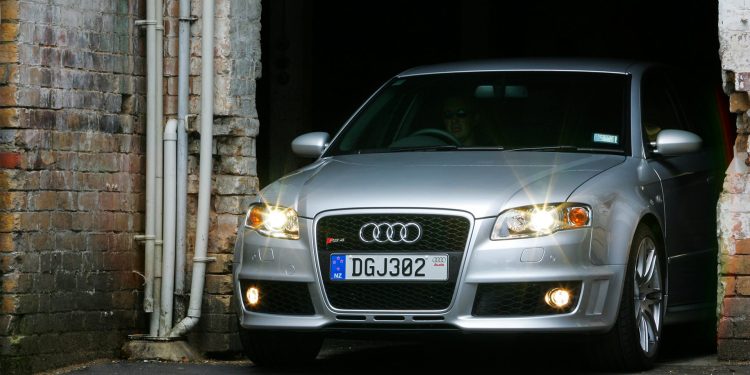2006 Audi RS 4 review
Words: Peter Louisson | Photos: Tom Gasnier
Audi has released its new RS 4 sedan, with Avant and convertible variants to come. We get to grips with the V8-powered 4WD RS 4 on the road and Taupo’s extended race track.
Memories are made of drives like these. Special drives when the traffic melts away, the weather does its best to be cooperative, you’re on a new road that swoops and dives, and you’re in a vehicle that is designed to thrill, its V8 racing to the 8250rpm redline, the tyres squealing their seal of grip approval. Most such memories are created not on the cols or passes through the French Alps, or on any of the other famed driving roads on the major continents. No, they’re created here in New Zealand, where we are privileged to have some of the best bitumen snakes in the world. With four million people spread over 100,000 square kilometres, give or take, and a road network that’s undulating and sparsely trafficked, we are blessed with driving conditions that overseas visitors must gawp at in astonishment. And for all those poor deluded souls heading to Aussie in the belief that it’s the lucky country (around 500 per week currently), I can honestly say I’ve had only a couple of truly memorable drives there. One of those was on a proving track, and the other in the Northern Territory, the Autobahn of the Outback. Launch drives in Aussie are exercises in frustration, tempered with the fear of losing all driving privileges in perpetuity.
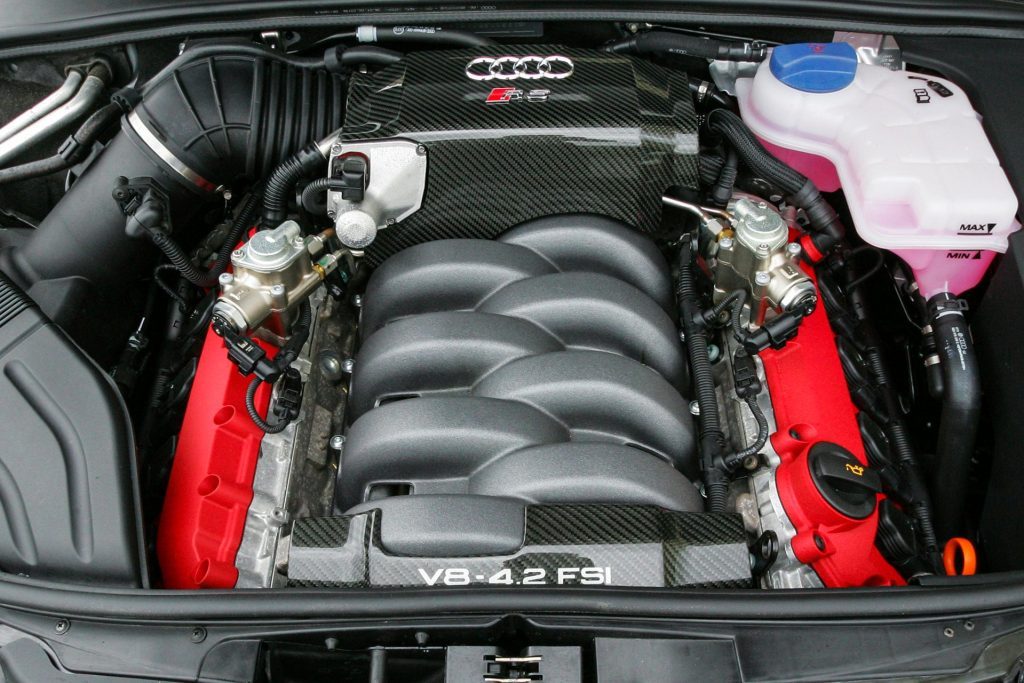
So anyway, there we were, on another of the countless brilliant roads that stud the central North Island in what will surely be remembered – well, in the post-oil future – as one of Audi’s most outrageous road-going vehicles yet, the RS 4. If ever a compact flyer was going to give BMW’s M3 a decent hurry along, this is it. And for proof, Audi decided to take the RS 4 and the local motoring scribblers to the newly-extended circuit at the Taupo Motorsport Park for a few hot laps.
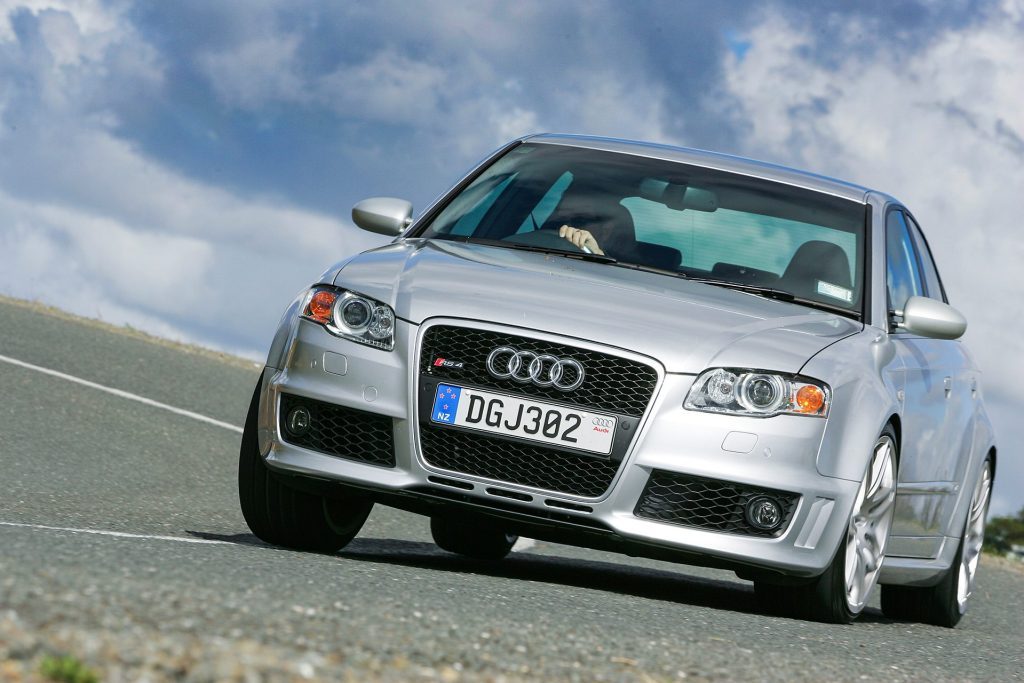
Now you might be thinking, why wouldn’t they? For no other importer and distributor (of dual-track vehicles anyway; Honda held the intro of its CBR1000RR there) has held a launch at New Zealand’s newest circuit – which, by the by, has been approved as a possible venue for MotoGP antics. But on the other hand, four-wheel-drive vehicles understeer when pushed, particularly those with front-to-rear weight distributions of around 60:40, like the RS 4. Clearly the adoption of an aluminium bonnet and wings, and placing the heavy engine components as far rearward as possible has not compensated for siting the engine in front of the leading axle. But in combination with the rearward bias of the quattro 4wd system – up to 85 per cent of the drive can be shifted to the back axle – it has certainly helped to disguise the front-heavy nature of the RS 4. Yes, there’s some front-end push on the track, but even here it’s a weapon. For the ESP system has been designed to intervene only when absolutely necessary, like for lead-foot and doh! moments, and then briefly. And if you’re brave, you can turn it off altogether and live life on the edge; let your judgement and the generous run-off be your backstops.
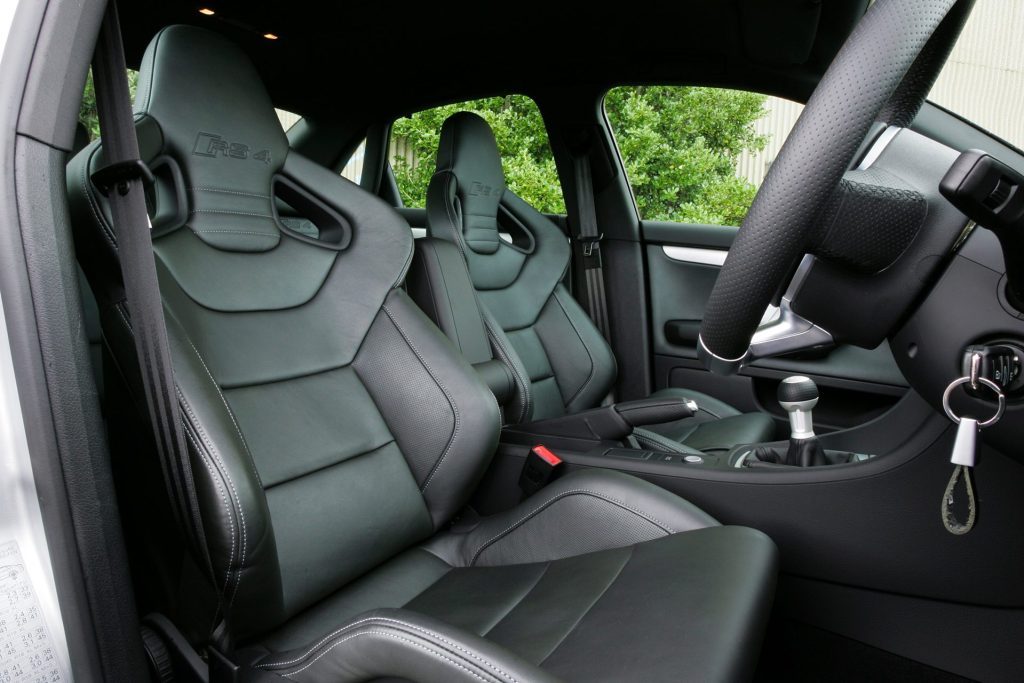
Not that we bothered. Our host wheelman for the day, endurance exponent, Jody Vincent, was adamant this wasn’t necessary (and probably wasn’t keen to see anyone spear off into the kitty litter). He demonstrated over five real quick laps of the new Taupo circuit extension just how fast the RS 4 is simply by working to its strengths. Put in basic terms, that’s slow and wide in, fast out. The new section of track twists and turns on itself sufficiently that there’s only one part of it, the short pit straight, where you might ever consider hooking fourth gear. In the grunt-laden RS 4, we students could concentrate on improving track management by simply leaving the car in third gear and trying to get entry speeds right – not too much tyre howl or heavy braking to load up the front-end, kiss the apex, and fire out under max attack. And can this thing hike! We now know what the ‘4’ stands for after the ‘RS’. Audi claims 0-100km/h in 4.8 seconds, which is simply astounding for a vehicle that weigh 1727kg, and runs with a small, normally-aspirated V8. It’s as quick as the old twin-turbo V8-powered RS 6.
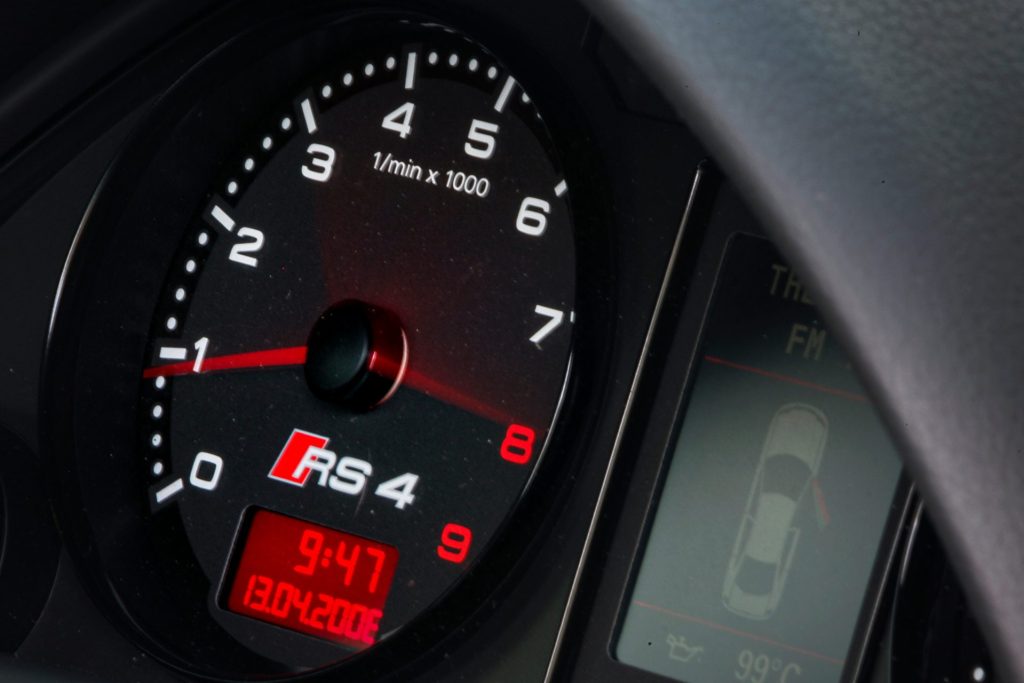
What an engine! It’s one of the best V8s – possibly the best – I’ve ever sampled. With high-pressure (120bar) direct injection, it has one the most responsive throttles I’ve ever encountered. And a quick burst through to the redline – which it accesses with ridiculous ease – confirms this as one of the most sensational-sounding as well. Which is a little surprising, given V8s don’t come an awful lot smaller than this, F1 cars excepted. Part of the explanation for its musicality is a device in the exhaust that opens when you press the ‘S’ button on the steering wheel. ‘S’ for ‘symphony’, more like it. On the launch drive there was an octet of RS 4s in line, and the drive from Hamilton to Taupo was akin to an automotive running of the bulls: you could hear the bellowing not only from your car, but also from those in front and behind. This was a drive to savour for so many reasons.
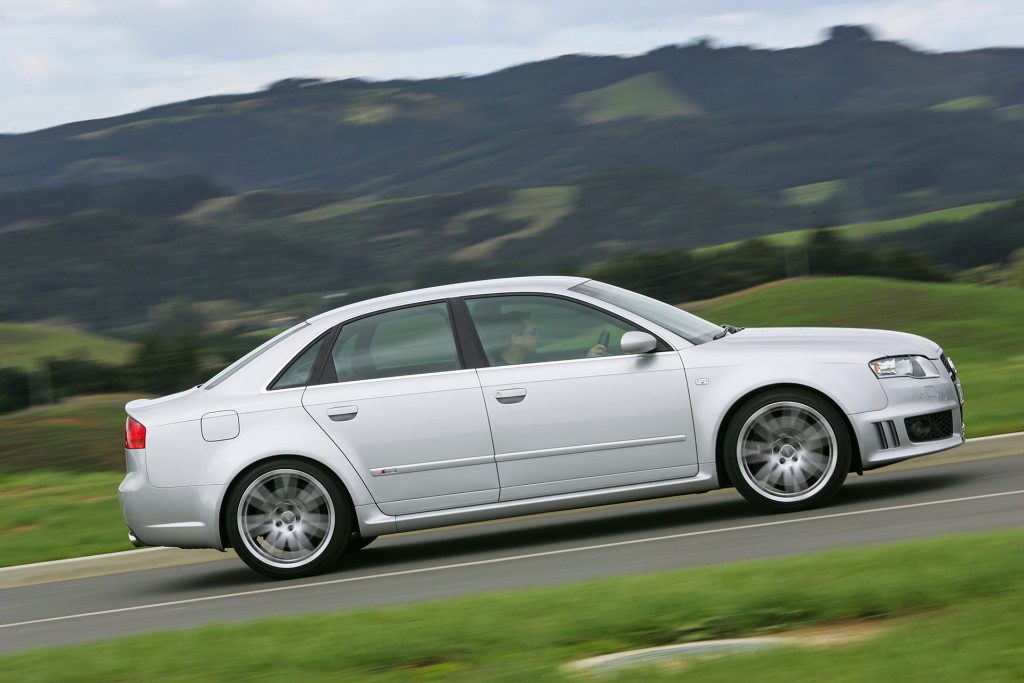
The noise is all part of the RS 4’s short but illustrious heritage. This is the second RS 4, and the first stems back only to 1999. That model, in an Avant body shape, was evidently noted for its emotion and sportiness, and also for its everyday practicality. Even now, the latest RS 4 is described by Audi as “the sports car for 365 days a year”. The original RS 4 had 380bhp courtesy of a 2.7 litre bi-turbo petrol, and the RS 2 of 1994 had a 2.2 litre 315bhp turbocharged engine. The RS 6 was powered by a turbocharged V8. Note the commonality here?
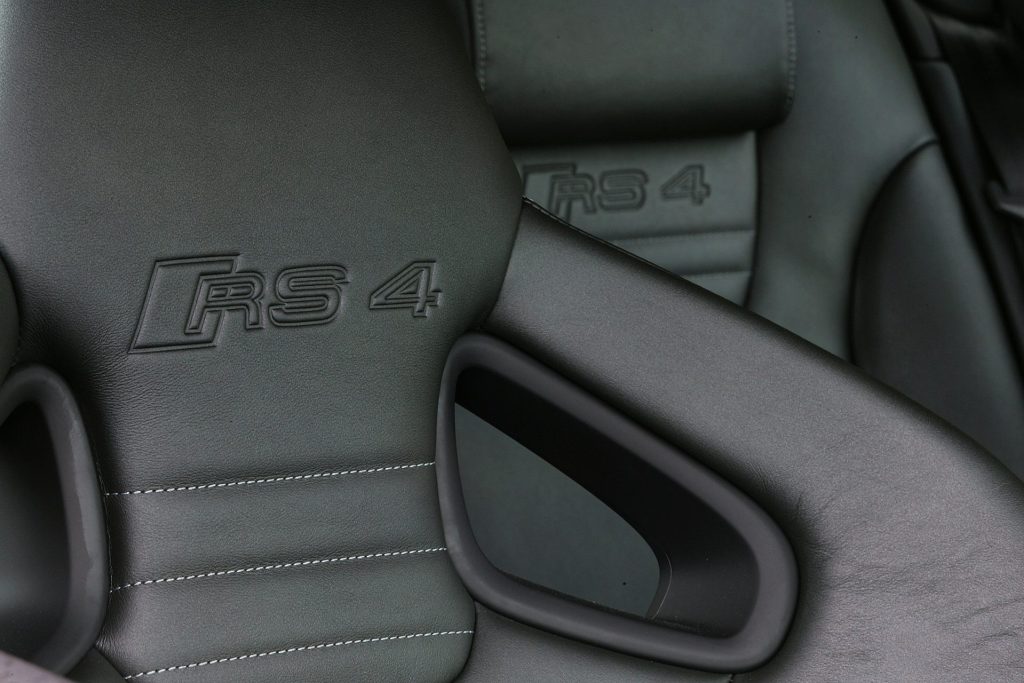
The new RS 4 breaks the turbocharged mould. Audi has opted for a high-revving normally-aspirated V8 to power the second-gen RS 4, debuting direct injection for the first time in this powerplant. The engine owes more to the 3.2 litre FSI V6 than it does to the A8’s powertain. Two high-pressure pumps driven off the camshafts force fuel directly into the combustion chamber, improving the efficiency of the burn, and secondarily providing a greater cooling effect, which allows the new V8 to run a high compression ratio of 12.5:1, further enhancing power output. An electronic throttle body the size of a saucer (90mm) helps the 4.2 litre V8 to generate a solid 309kW, and 430Nm of torque at 5500rpm. While that might seem like an abnormally high peak rev point for maximum torque production, Audi seldom disappoints for low rev oomph; at least 90 per cent of twist is generated between 2250 and 7600rpm. In the real world you can overtake without having to downshift. But that wouldn’t be much fun now, would it? Audi has mated the stroppy little V8 to an absolutely world-class six-speed manual transmission. It shifts with liquid precision and the directness of a PR consultant. Just don’t expect a self-shifter any time soon. Currently, none is envisaged because of the high-revving nature of the engine.
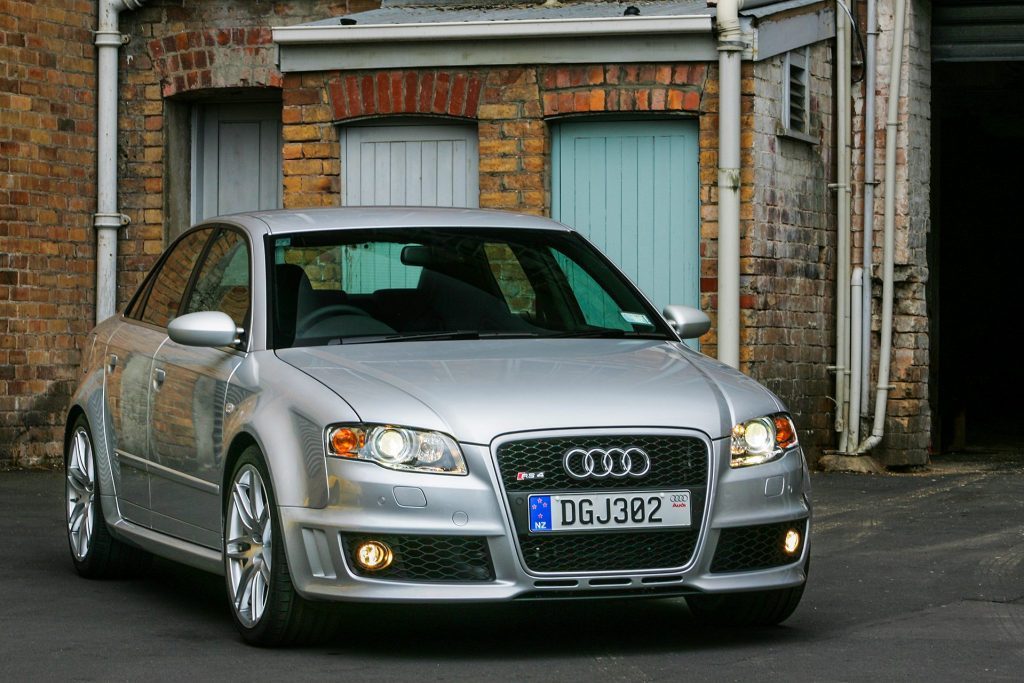
Bringing the beast to heel are brakes that never seem to tire or fade, even when subjected to the abuse of lapping a track. A perusal of the spec sheet explains why: the fronts have eight-piston calipers, four either side of the 365mm perforated and ventilated discs. NACA ducts supply fresh air to dissipate heat. They’re state of the art in other ways too: running Bosch v8 ESP, they have a dry brake function. In wet conditions, the brakes lightly brush against the rotors to rid them of excess water, meaning they’re optimised for action no matter what the weather.
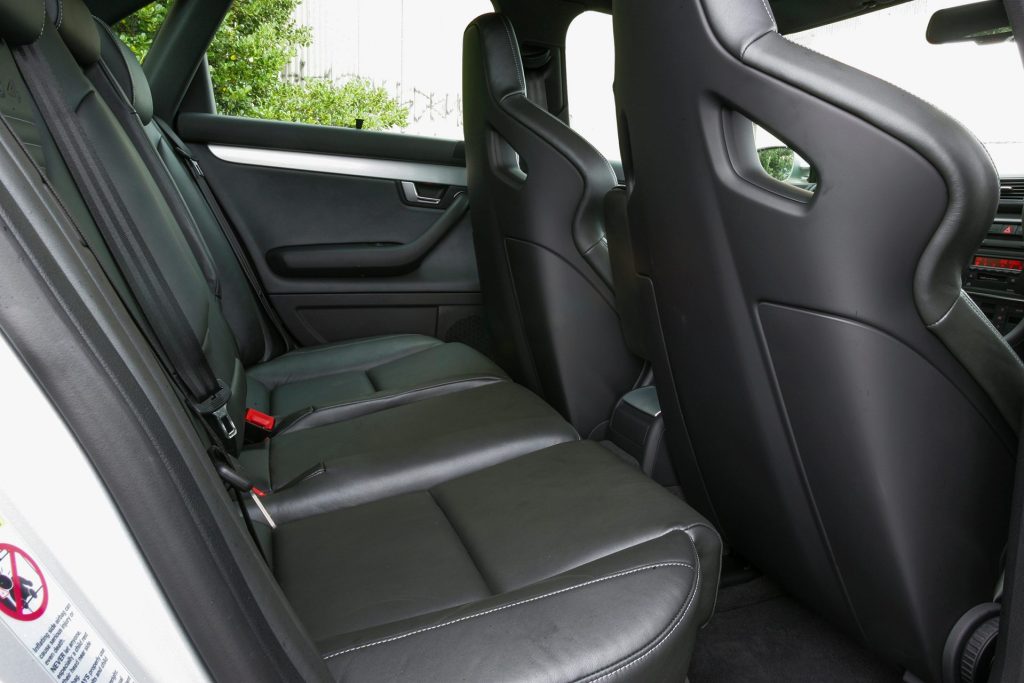
So plenty of technology in the RS 4, only some of which we’ve touched upon. But there’s also styling to match, and it’s relatively subtle, in RS fashion. The stance is fabulous: nineteen-inch rims are standard, the ride height drops 30mm, and the guards are pumped. Aero bumpers front and rear, and a sports grille and exhausts differentiate the top A4 from the rest.
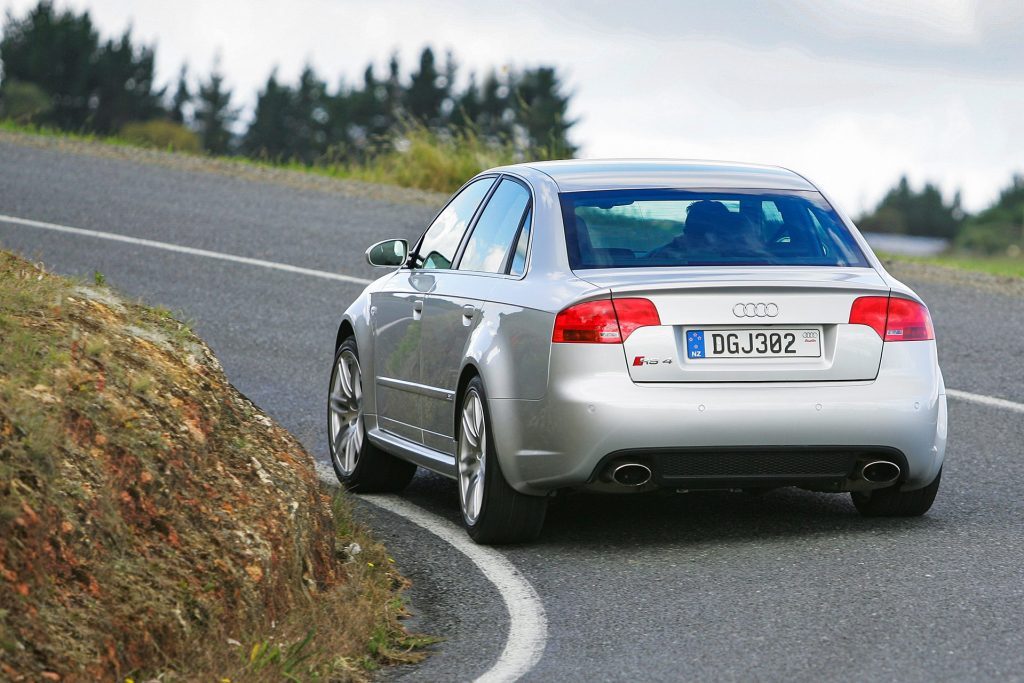
The interior is orderly, so it is an intuitive drive, with very little to distract the pilot. In an automotive world with increasingly sophisticated software driving the minor controls, it’s refreshing to see a high-worth vehicle that you can simply jump into and drive without having to undergo a one-day familiarisation course. Or groping through a two-kilogram owner’s manual. About the only unusual controls here are the starter button – it’s behind the gearshift lever – and the S button on the steering wheel. The latter is M3-esque, in that it sharpens up throttle response, but it also has a number of other effects. Just in case you were unaware of the potential cornering G-forces on hand here, the S button automatically pumps up the side bolsters to lock you in tight for some serious corner-carving. You can also adjust the air bladders manually with buttons at the side of the seat.
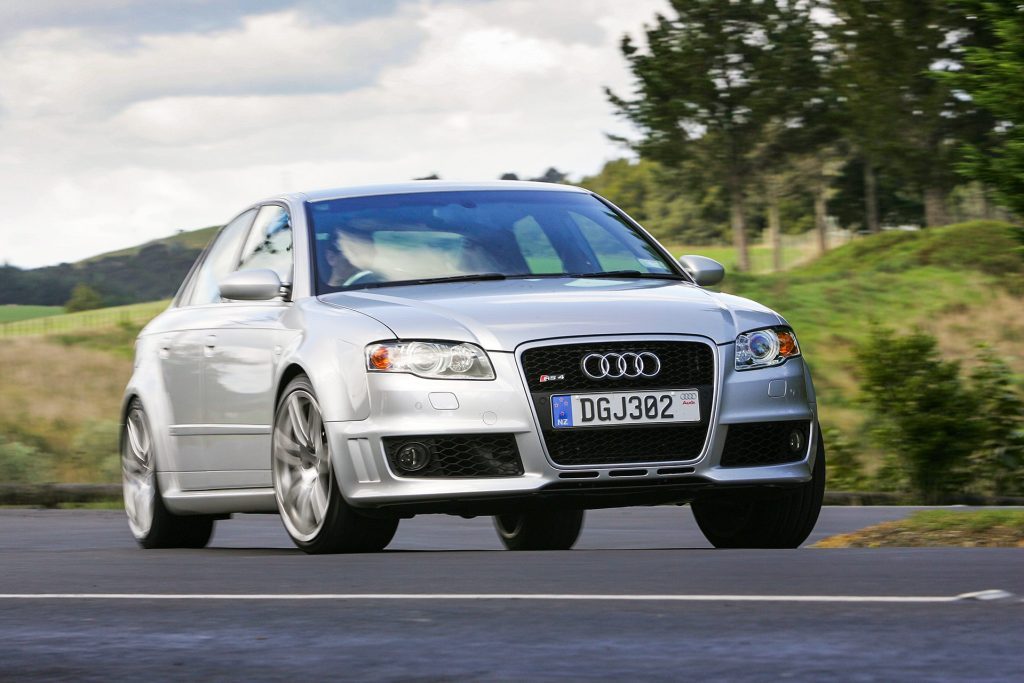
One other wee thing the S button does is to release the hounds. More specifically, a flap in the custom exhaust pipes opens, a little like that in the V8 Vantage, so the RS 4 can bay with the best of them. On a calm day you will be able to hear the RS 4 bark from a kilometre or so away. Not that it’s especially loud from inside. Just divine.
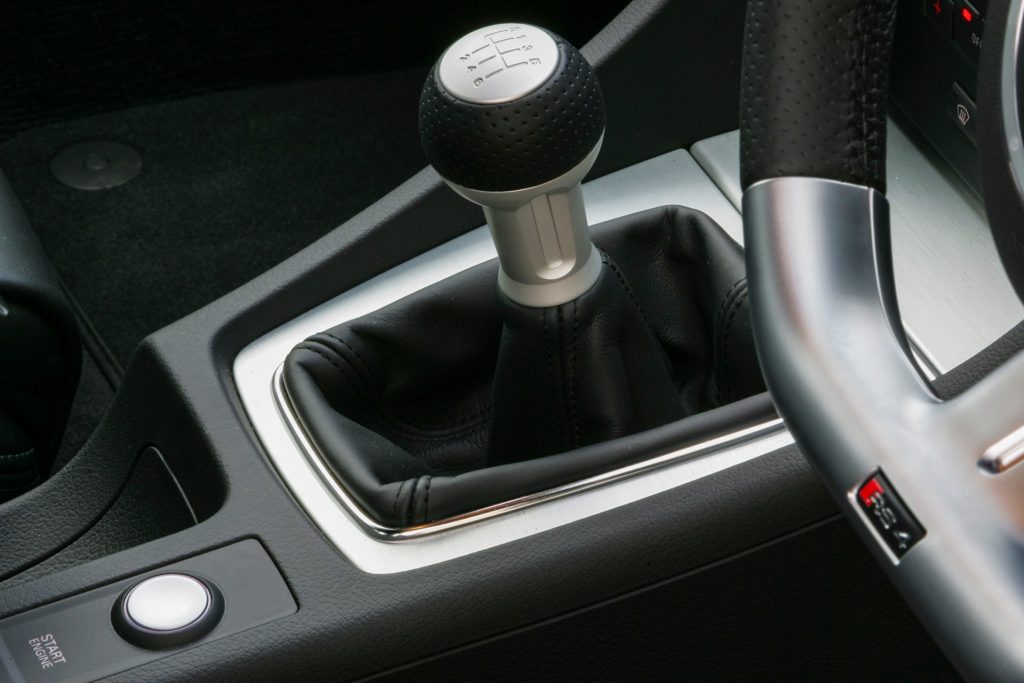
With the S button engaged, the throttle response is absolutely astounding. Sometimes you make to get on the gas and find yourself suddenly surging forwards. So it can be a bit of an act keeping things smooth, but that just makes it more rewarding when you get it right.
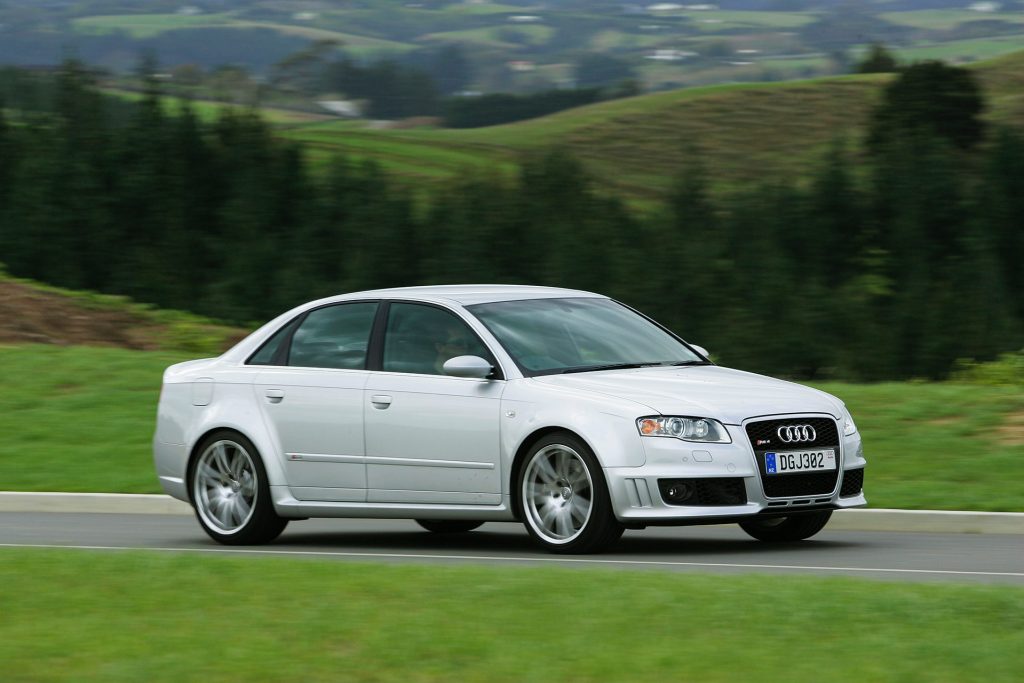
The performance itself can take some getting used to as well. Even in the lower gears, winding the engine out to its redline can result in some fairly serious infringing. Just as well we were at the track to check this out. Third gear? Around 170 clicks at 8000rpm. It’s not just the speed that’s spellbinding: it’s the rapidity and ease with which the V8 hits its limiter. It spins to the redline almost in rotary fashion.
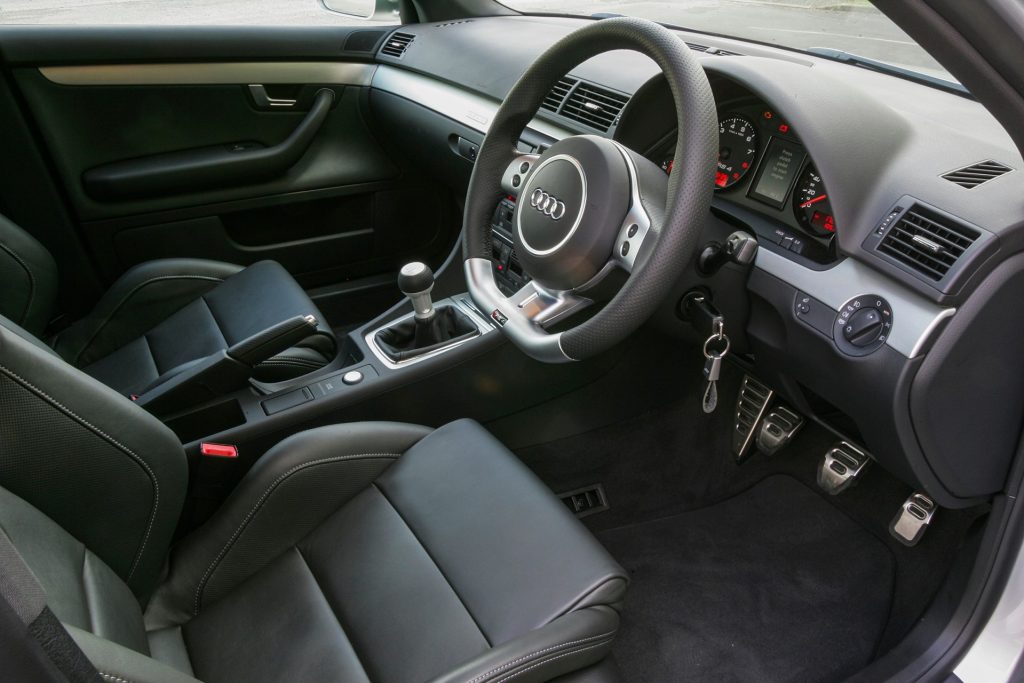
There are a couple of other quite exceptional aspects to this car – and probably more, but these stand out. Steering. Long a moot (should that be mute?) point for Audis, the RS 4 nails it, the servotronic speed-sensitive wheel offering good weight, feel, and turn-in. The squashed rim works just fine, because it takes only 2.5 turns to swing from lock to lock.
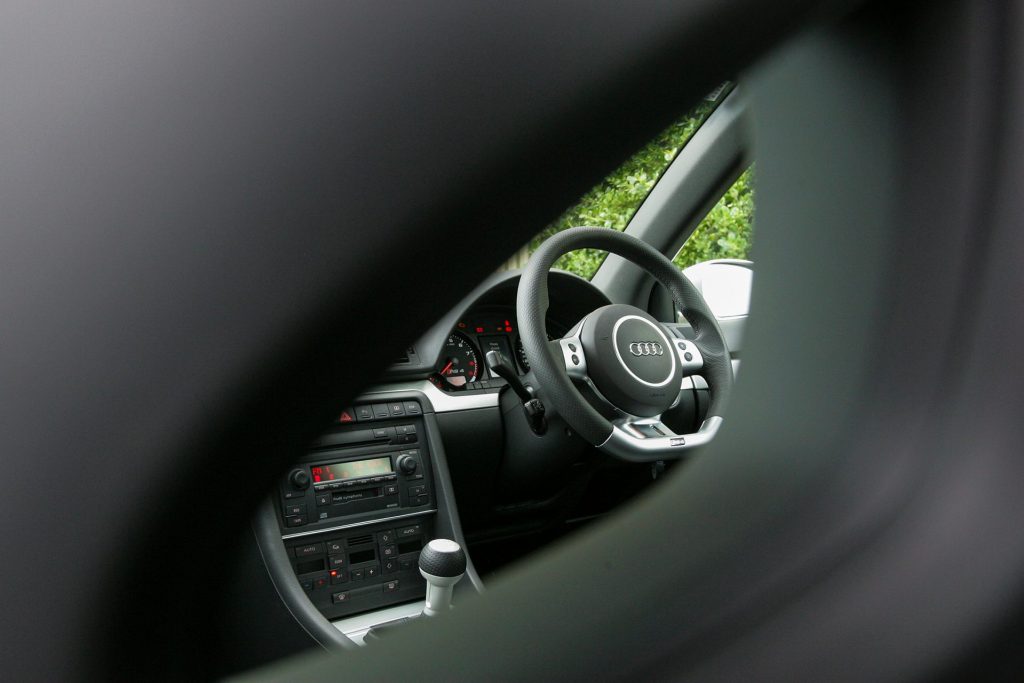
Second up, Dynamic Ride Control II. This is clever, mainly because it depends on hydraulics rather than electronics, so you know it’s going to be more reliable. Dampers at diagonally opposite ends of the car are linked hydraulically via a central valve charged with nitrogen. This permits instantly variable adaptation of compression and rebound damping characteristics, limiting roll, squat, and dive in cornering, accelerating, and braking, respectively. Which it does impressively, but the real coup is its ride quality, which is completely unbecoming of a sports car. The $159,500 price-tag of the RS 4 places it firmly in luxury-car territory, and it pampers accordingly.
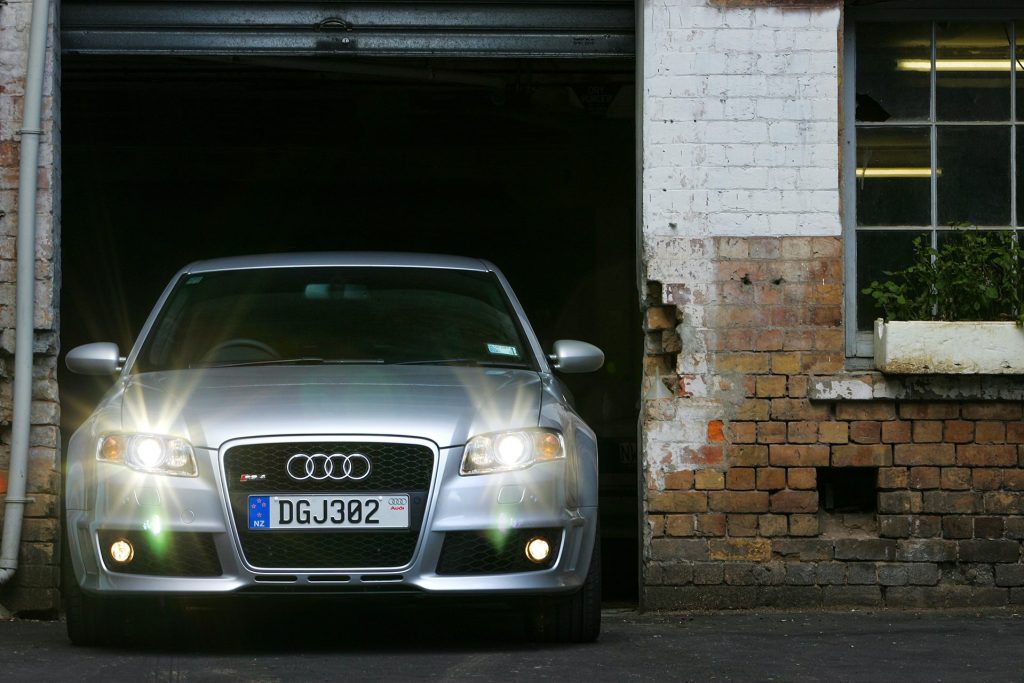
Knowing BMW was dropping its inline six for a V8 in its forthcoming M3 rather forced Audi’s hand to head down the same track. While it hasn’t the same throttle-adjustable handling balance of the existing M3 (or the forthcoming one, in all likelihood), it’s a case of the RS 4 having different strengths. Few high-performance vehicles will be less likely to bite you on the bum than the RS 4, and fewer still will prove more comfortable or practical, particularly with the Avant offering that’s here before year’s end. Audi expects to sell 50 RS 4s per year, and is already holding forward orders for 30. One thing we’re sure of: there’ll be plenty of memorable drives in store for these happy campers.
| Model | 2006 Audi RS 4 |
| Price | $159,500 (when new) |
| Engine | 4163cc, V8, EFI |
| Power | 309kW/430Nm |
| Drivetrain | 6-speed manual, AWD |
| Fuel Use | 13.5L/100km |
| 0-100km/h | 4.8sec (claimed) |
| Weight | 1727kg |
Related reviews: 2018 Audi RS 4 road test


